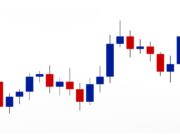The right stocks can make you rich and change your life.
The wrong stocks, though… They can do a whole lot more than just “underperform.” If only! They can eviscerate your wealth, bleeding out your hard-won profits.
They’re pure portfolio poison.
Surprisingly, not many investors want to talk about this. You certainly don’t hear about the danger in the mainstream media – until it’s too late.
That’s not to suggest they’re obscure companies – some of the “toxic stocks” I’m going to name for you are in fact regularly in the headlines for other reasons, often in glowing terms.
I’m going to run down the list and give you the chance to learn the names of three companies I think everyone should own instead.
But first, if you own any or all of these “toxic stocks,” sell them today…
Advanced Micro Devices (NASDAQ:AMD)
Despite the initial excitement around AMD’s AI chip sales projections earlier in 2024, the reality has proven less rosy. AMD’s shares skyrocketed on optimistic sales forecasts, only to shed about 30% from their springtime peaks after a disappointing first-quarter update.
While AI remains a significant trend, AMD’s forecast for $3.5 billion in AI sales for 2024 didn’t see an upward revision post-Q1, signaling a potential stagnation in what many hoped would be a more dynamic growth segment. Moreover, the company’s second-quarter revenue guidance indicates only modest year-over-year growth, casting further doubts on its short-term revenue prospects.
Financially, AMD still faces challenges. The first-quarter results revealed a mere 6% operating margin in its client revenue segment, underscoring a crucial need for improvement. Although there was some margin expansion in its data center operations, this hasn’t been enough to offset weaknesses elsewhere.
Given the lackluster guidance and ongoing margin issues, it might be wise to hold off on viewing the recent dip in AMD’s stock price as a buying opportunity. Instead, consider this period a recalibration of expectations. For those holding shares, it’s a time for patience, but for potential buyers, caution is advised until AMD demonstrates a more robust financial turnaround.
Starbucks (NASDAQ:SBUX)
Despite the company’s iconic brand and strong historical performance, recent developments signal potential trouble ahead.
Starbucks recently delivered its weakest performance in decades, a concerning sign given the current leadership instability. The company is now under its third CEO since Howard Schultz, and the recent results do not inspire confidence in a quick turnaround. Laxman Narasimhan, the latest at the helm, faces the tough challenge of steering Starbucks back to its former dominance in an increasingly competitive coffee market.
The shift towards smaller, drive-through oriented shops hasn’t fended off new and agile competitors, especially those capitalizing on trendy offerings like boba, which Starbucks has been slow to adopt.
While the risk of the company failing is minimal in the near term, the ongoing leadership challenges and lackluster adaptation to market trends make SBUX a less attractive investment right now. Investors might want to steer clear or consider reducing holdings until clearer signs of effective leadership and strategic direction emerge.
Snowflake (NYSE: SNOW) – Cooling Off Amidst AI Hype
Snowflake, a leader in cloud-based data warehousing, has seen its shares tumble 21% this year, sharply contrasting with the broader tech surge driven by AI excitement. This decline highlights growing concerns that Snowflake may be lagging in the AI race, a crucial area of growth within the tech sector.
Despite its historic IPO in September 2020, which marked the largest software debut of its time and pushed its market valuation to a peak of $123 billion by the end of 2021, Snowflake’s value has more than halved to just over $50 billion. This downturn is particularly glaring as its peers in the SaaS domain, like Palantir and MongoDB, have successfully capitalized on their AI initiatives, seeing their stocks appreciate as a result.
Adding to its challenges, Snowflake faced a leadership shakeup with the departure of CEO Frank Slootman earlier this year, further shaking investor confidence. Although the new CEO, Sridhar Ramaswamy, brings a strong AI background from his time at Alphabet and his AI startup Neeva, the company’s future in AI remains uncertain. Recently, Snowflake announced the launch of Arctic, its own large language model, signaling a step towards strengthening its AI offerings. However, it’s still an open question whether this move can significantly alter its trajectory in the competitive AI landscape.
Investors might consider staying on the sidelines for now, watching how Snowflake’s strategies under new leadership unfold in the rapidly evolving tech arena.






